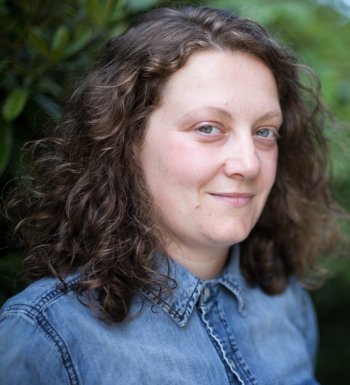As Black History Month draws to a close, Pacific Theatre will present the Canadian premiere of Mark St. Germain’s Best Of Enemies.
Adapted for the stage from a non-fiction book by Osha Gray Davidson, Best Of Enemies follows civil rights activist Ann Atwater as she works to de-segregate schools in Durham, North Carolina against the wishes of local KKK leader CP Ellis.
“Fifty years after these events took place, the story is still, sadly, as relevant and pertinent today,” says director Ian Farthing. “But its message, that when people actually connect, prejudice can disappear, is one that gives me hope.”
Helping to bring Best Of Enemies to the Pacific Theatre stage is designer Sandy Peters. Using assemblage art, an installation-based style popular in the 1970s, as a starting point, in this Q&A, we find out more.
This interview has been edited.
What got you excited about designing for Best of Enemies?
Right away, I saw the potential to construct something very layered and textural to reflect the challenges and complexities of this story. I didn’t want to make something literal; we knew that the physicality of the space had to be conceptual and abstract.
You are using assemblage art for your design. Can you describe in simple terms what that means for someone unfamiliar with the art form?
Assemblage or, as some define it, ‘found’ or ‘junk’ art has a big connection to activism and artwork with a political significance. In America specifically, assemblage work and the artists best known within that genre during the civil rights era always had something political to say or reflect upon. It’s also very obvious to me that the challenges of those times and the things that Ann was fighting for are not dead and gone subjects but are very real and present problems facing contemporary school systems.

How did you come to choose it as the basis for your design?
I have a bit of an art history background, and this was an opportunity to put that front and centre. I’m always aspiring to make work with political leanings whenever it suits.
How does the design add to the story being told on stage?
As I said earlier, the story is complex. Not only does it spring from a very complicated time in modern history, I quickly saw that it’s not about telling a singular story with a beginning and an ending – the design needed to tell multiple stories all at once. It had to be busy and discordant. This script takes place in 27 different locations or something like that – we needed to show snippets of all of them and from all chronologies.
As a designer, how closely do you work with the director? Do you have a free hand in designing? What’s the process?
I always love to discuss things with a director as much as I can, especially if they find visual things as meaningful as I do. I’m also a huge researcher. This particular project was very ‘freehanded’ as I improvised almost everything about it as I collected objects and materials. When I got something that I found interesting, I found a niche for it in relation to something else. It’s all about improvisational composition.
The Pacific Theatre alley theatre, with the audience on two sides, is not your typical set-up. Did you approach your design differently to design for the space?
Making this sculptural approach works very much for this configuration, for once! I hope to make something appealing to look at for every seat. It’s not about the big picture – every seat will have their own little picture.
What was the biggest challenge you had to overcome in designing for the space?
Doors. The doors will always be in the same places, won’t they?
Is there something audiences should watch for in your design?
I have some favourite moments. I particularly like the layers of paper ephemera, such as the protest posters and signage, which I reproduced from photographs of actual marches in North Carolina.
Why should someone come to see Best of Enemies?
It’s not enough to say that it’s an important story; of course, it is. I had never heard of Ann Atwater, and now I’m a better citizen because of it. She was pretty cool. I had also not known that Greensboro, North Carolina was home to some of the first student-led lunch counter sit-ins in the sixties. Young people, as usual, kicked off the desegregation of white-only public spaces with pro-action, much to the ‘inconvenience’ of other citizens. I don’t think that sounds too unfamiliar these days.
Best of Enemies plays Pacific Theatre (1440 West 12th Ave, Vancouver) from February 28 through March 21. Visit pacifictheatre.org for tickets and information.